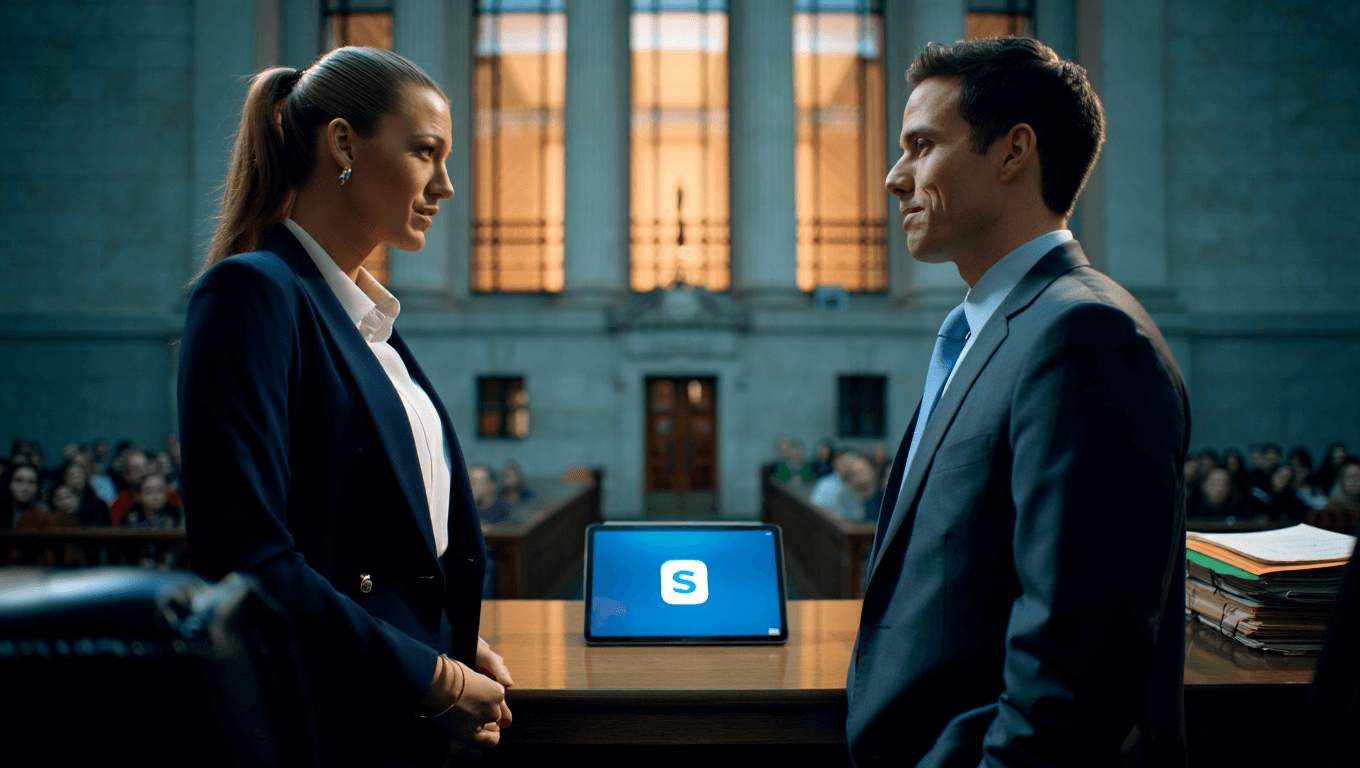Blake Lively accuses Justin Baldoni of destroying critical evidence using encrypted apps. Court filings dated October 22, 2025 expose the alleged scheme. Lively’s legal team claims Baldoni destroyed messages via the Signal app about a smear campaign. The case heads toward trial on March 9, 2026.
TubiTV Just Hit 200 Million Users – Here’s Why
10 Perfect-Score Shows Buried on Prime Video Right Now
🔥 Quick Facts:
- Evidence destruction allegations filed October 22, 2025 with federal court.
- Encrypted Signal app and auto-deleting voice memos allegedly used to hide communications.
- Lively’s legal team filed 12+ discovery motions against Baldoni’s team.
- Baldoni’s $400 million countersuit was dismissed by federal judge in June 2025.
- Trial date set for March 2026 in New York federal court.
What Happened: The Signal Evidence Disappearance
In a bombshell court filing, Lively’s attorneys allege that Baldoni’s camp intentionally destroyed evidence. They used the encrypted Signal app to communicate about the alleged smear campaign. The messages were set to auto-delete in real time.
The $3.99 Streaming Service With 500+ Oscar Winners Nobody Knows About
Cancel These 3 Subscriptions Before November 1st – Here’s Why
Lively’s legal team states: “Defendants anticipated litigation by August 2024.” Despite this knowledge, they elected to use temporary messaging platforms. Baldoni’s representatives allegedly failed to preserve these communications before December 20, 2024, when Lively filed her formal lawsuit.
“Conversations were moved to an auto-deleting platform and evidence was destroyed. There can be only one reason for this. They had something to hide and wanted to make sure it would never be discovered.”
Lively’s attorneys also point to depositions with former Melissa Nathan staffers. These witnesses allegedly provided evidence about Signal usage and voice memos. The court filings describe a pattern of deliberate cover-up tactics.
Why This Matters: Evidence Spoliation Claims Strengthen Her Case
The evidence destruction allegations significantly boost Lively’s legal position. If the judge agrees, he can issue “adverse inference” instructions to the jury. This means the jury can assume destroyed messages contained damaging admissions.
Lively’s team is essentially asking the court to presume guilt based on the destruction alone. The logic is simple: if you have nothing to hide, you preserve communications.
This tactic puts pressure on Baldoni’s defense team. They must now prove the Signal app usage wasn’t intentional spoliation. Baldoni’s lawyer Bryan Freedman has maintained all allegations are “completely false.” However, the encrypted messaging narrative undermines this denial.
Judge Lewis Liman will decide whether to grant Lively’s sanctions motion. If successful, the jury will hear prejudicial instructions against Baldoni before trial even begins.
The Timeline: Discovery Failures and Disputed Claims
Lively’s legal team reveals a troubling pattern of discovery violations. Court documents filed today detail multiple instances where Baldoni’s camp allegedly hid evidence. Twelve discovery-related motions have been filed against them to date.
| Claim | Details |
|---|---|
| Evidence Destroyed | Signal app messages and auto-deleting voice memos |
| Timeline | August 2024 – December 2024 |
| Individuals Involved | Jennifer Abel, Melissa Nathan, Bryan Freedman |
| Discovery Motions Filed | 12+ motions against Baldoni’s team |
| Court Location | U.S. District Court, Southern District of New York |
Sources within Lively’s camp point to depositions conducted earlier this year. Former publicist staffers testified about the messaging platform strategy. Katherine Case and Breanna Butler allegedly provided key witness accounts.
Baldoni’s legal representatives have not publicly responded to these specific allegations. However, his team maintains he orchestrated no campaign. They claim the negative online reaction was “organic” from regular social media users.
What To Watch For: Judge’s Ruling and Trial Implications
- Judge Lewis Liman’s decision on the sanctions motion will come before March 2026 trial.
- Adverse inference instructions to the jury could prove devastating for Baldoni’s defense.
- Jonesworks LLC’s parallel filing strengthens Lively’s spoliation argument substantially.
- Deposition evidence from publicist staff will likely be highlighted at trial.
- The Signal app policy argument may become the centerpiece of jury instructions.
Legal experts note that evidence destruction claims often reshape litigation outcomes. If the judge sanctions Baldoni for spoliation, Lively’s team gains significant trial advantage.
The case continues to draw national attention as a high-profile clash between a major actress and film director. Media coverage intensifies as the March 2026 trial date approaches.
Did Evidence Destruction Really Occur or Is This a Legal Strategy?
Blake Lively’s accusations rest on the alleged use of Signal app and auto-deleting voice memos. Her legal team argues this demonstrates consciousness of guilt. However, critics ask: could encrypted messaging simply reflect privacy preferences?
Baldoni’s defense could counter that many professionals use Signal for security reasons. Using such apps doesn’t automatically prove wrongdoing. The key issue: were communications destroyed intentionally to hide evidence?
Judge Lewis Liman must ultimately decide what inferences the jury should draw. If Lively prevails on the spoliation motion, the trial outcome could swing dramatically toward her. What remains to be proven is whether the encrypted communications actually contained evidence of a deliberate smear campaign.
The March 2026 trial will test these conflicting narratives head-to-head in front of a jury. Both sides have millions at stake legally and financially.
Sources
- Deadline – Court filings and legal team statements on evidence destruction allegations
- BBC News – Timeline of legal battle and case developments
- ABC News – Legal timeline and trial date information
Similar posts:
- Justin Baldoni accused of destroying evidence using encrypted app Signal in Blake Lively lawsuit
- Blake Lively accuses Justin Baldoni of destroying evidence using encrypted Signal app
- Blake Lively’s lawyers allege Justin Baldoni used auto-deleting app Signal for smear campaign
- Justin Baldoni faces evidence destruction allegations as Blake Lively team exposes auto-deleted messages
- Justin Baldoni allegedly used Signal app to delete smear campaign messages vs Blake Lively

Daniel Harris is a specialist journalist focused on the crossroads of breaking news, extraordinary history, and enduring legends. With a background in historical research and storytelling, he blends timely reporting with timeless narratives, making complex events and ancient myths resonate with today’s readers. Daniel’s work often uncovers surprising links between present-day headlines and legendary tales, offering unique perspectives that captivate diverse audiences. Beyond reporting, he is passionate about preserving oral traditions and exploring how extraordinary stories continue to shape culture and identity.

